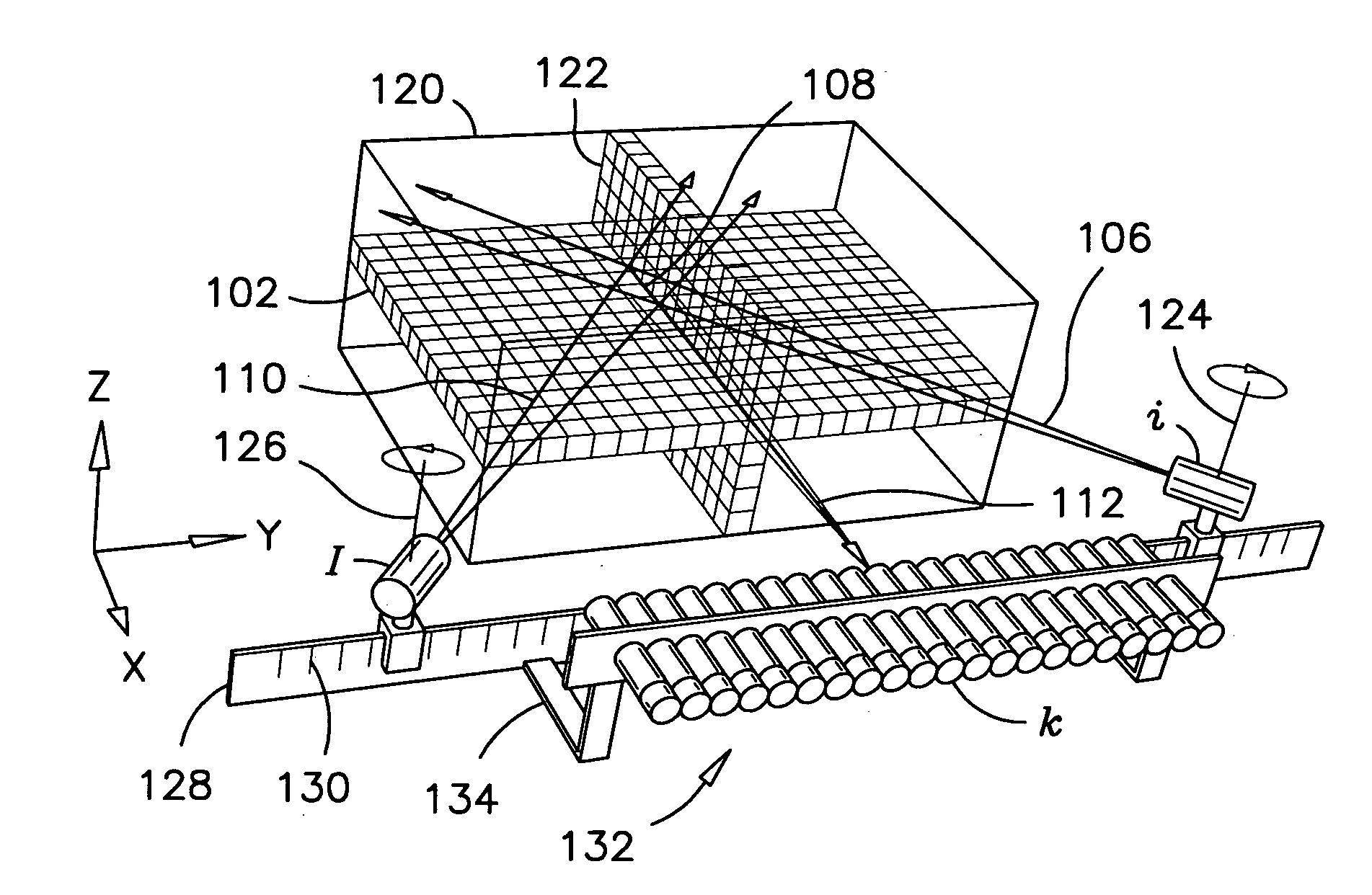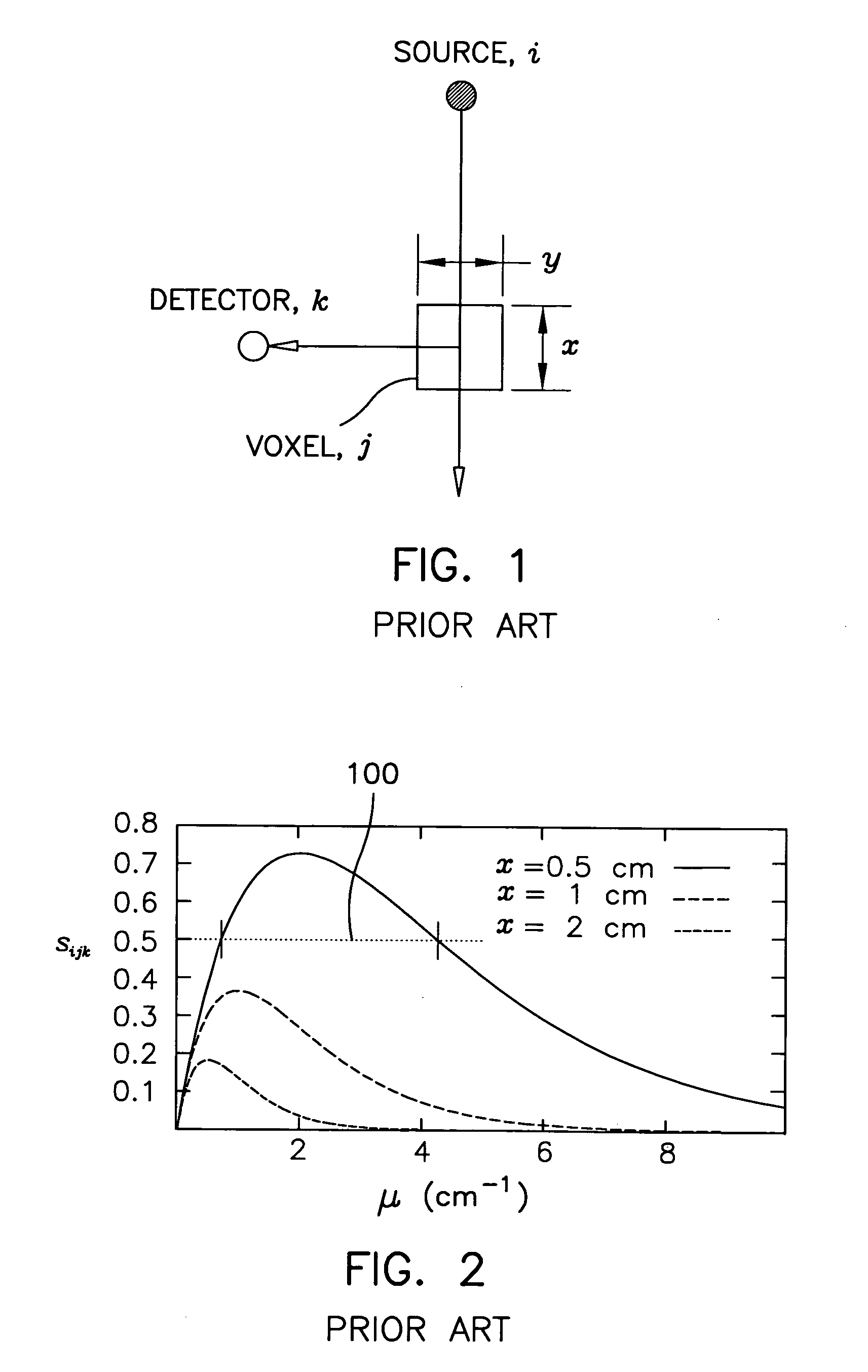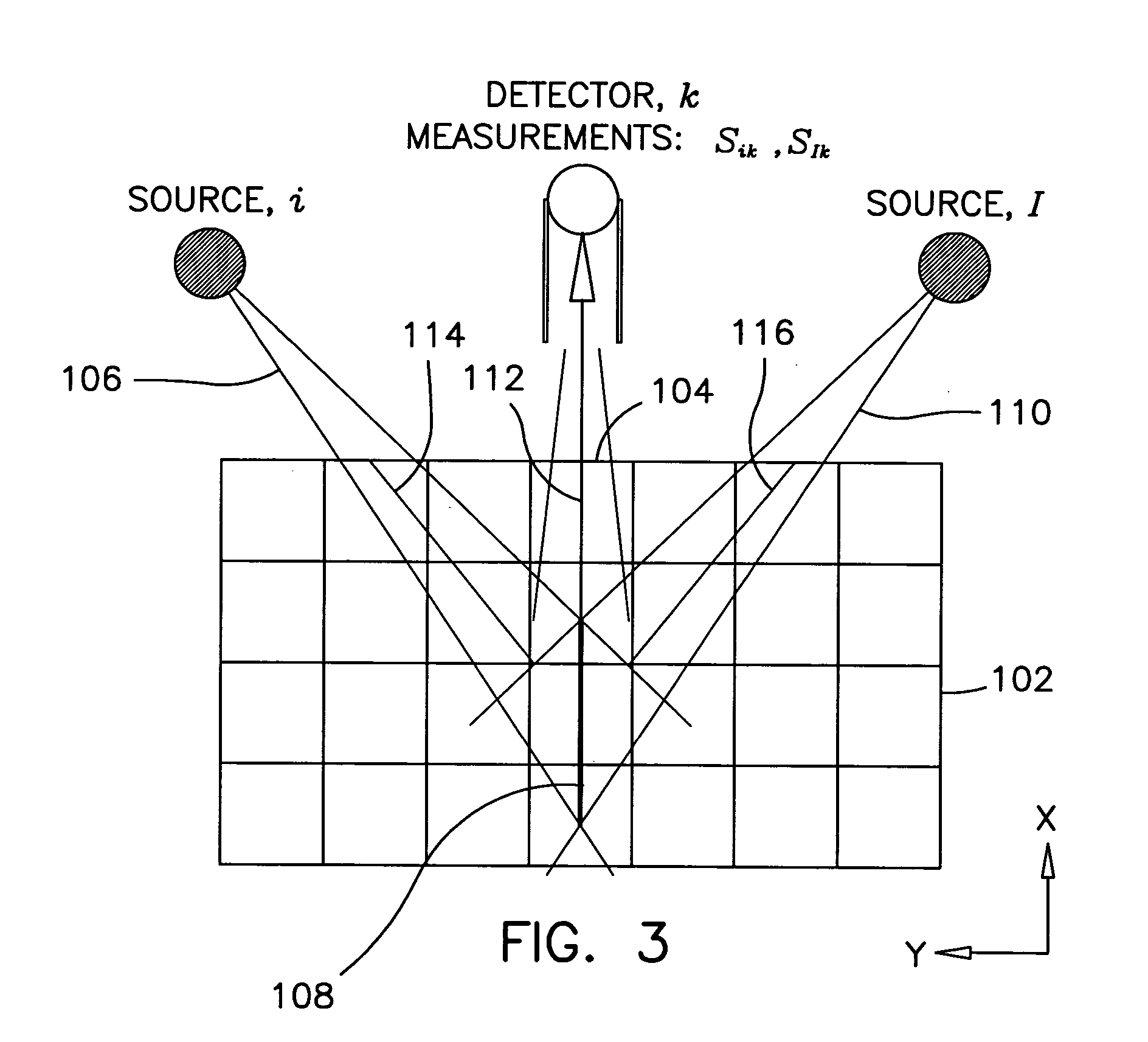X-ray scatter image reconstruction by balancing of discrepancies between detector responses, and apparatus therefor
a scatter image and detector response technology, applied in the field of x-ray and density imaging of objects, can solve problems such as matching calculated discrepancies, and achieve the effects of non-linearity of the inverse problem, and reducing the instability of the iterative process
- Summary
- Abstract
- Description
- Claims
- Application Information
AI Technical Summary
Benefits of technology
Problems solved by technology
Method used
Image
Examples
Embodiment Construction
[0062]While this invention is susceptible of embodiments in many different forms, there are shown in the drawings and will be described in details herein one specific embodiment of a method to do x-ray imaging of thick objects from one side of the object and one preferred embodiment of an apparatus for x-ray imaging of objects, and for carrying out the preferred method. It should be understood that the present disclosure is to be considered as examples of the principles of the invention and is not intended to limit the invention to the embodiments illustrated and described. Furthermore, although x-ray and cone and fan beams are mentioned herein, it will be appreciated that the method and apparatus according to the preferred embodiments can also be used with pencil beams, with gamma rays and fast neutrons.
[0063]Similarly, it should also be appreciated, that the detector described herein can be collimated by physical means or by software means using energy measurement or time of fligh...
PUM
| Property | Measurement | Unit |
|---|---|---|
| attenuation coefficient | aaaaa | aaaaa |
| diverging angle | aaaaa | aaaaa |
| density | aaaaa | aaaaa |
Abstract
Description
Claims
Application Information
 Login to View More
Login to View More - R&D
- Intellectual Property
- Life Sciences
- Materials
- Tech Scout
- Unparalleled Data Quality
- Higher Quality Content
- 60% Fewer Hallucinations
Browse by: Latest US Patents, China's latest patents, Technical Efficacy Thesaurus, Application Domain, Technology Topic, Popular Technical Reports.
© 2025 PatSnap. All rights reserved.Legal|Privacy policy|Modern Slavery Act Transparency Statement|Sitemap|About US| Contact US: help@patsnap.com



